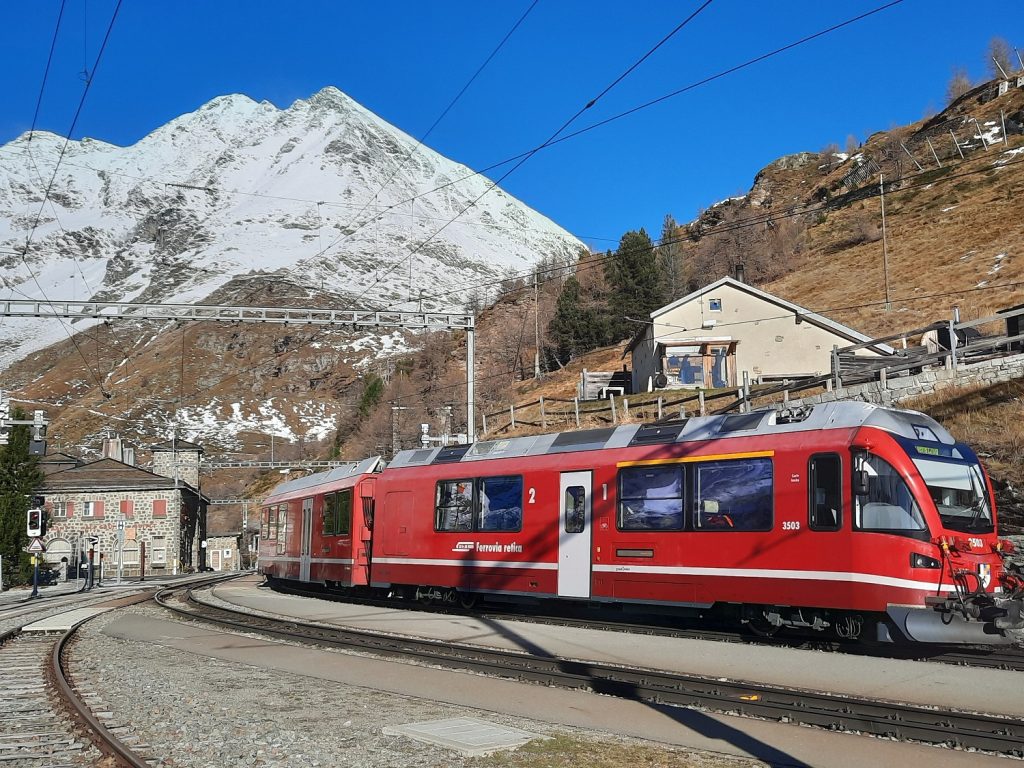 PJM was commissioned to perform dynamic tests for Rhaetian Railway (RhB) to examine existing and future train configurations and operational concepts. The PJM project for the Rhaetian Railway included simulations as well as a measurement campaign with instrumented wheel sets, acceleration sensors and force transducers as well as specially developed measuring buffers.
PJM was commissioned to perform dynamic tests for Rhaetian Railway (RhB) to examine existing and future train configurations and operational concepts. The PJM project for the Rhaetian Railway included simulations as well as a measurement campaign with instrumented wheel sets, acceleration sensors and force transducers as well as specially developed measuring buffers.
The vehicle tests took place on the route between Poschiavo and Alp Grüm. The running behaviour and the occurring forces were measured under a wide range of operating conditions.
The project was carried out in several parts by the experienced system specialist from Austria. In the preliminary stage, the wheel-rail forces as well as occurring buffer forces were determined by simulations and in this way, critical conditions or constellations could be resolved computationally. Another advantage is that this keeps the metrological effort to a minimum. Instrumented wheel sets, accelerators, transducers as well as measuring buffers were prepared in the usual way at the company‘s location in Graz and then installed on the test vehicle at the RhB main workshop in Landquart.
In real operation, the running behaviour was tested under increased operating forces. The test runs took place in November 2022 and the data analysis and report were recently completed.
“A project of this kind requires more than just test run know-how. We also have many years of experience in the implementation of instrumented wheel sets. Due to the simulations in advance, we can carry out the driving tests in an extremely efficient manner. Thanks to our theoretical as well as practical expertise, we can ideally link the results from the calculation with the test results from real operation. Our customers benefit from economically efficient project handling, reliable data material and a single point of contact throughout the entire project,” Martin Joch, CEO of PJM said.
For the first time, the mobile calibration test rig for measuring wheelsets developed by PJM was used in this project in addition to the proven calibration procedure. This means that measurement reliability can also be ensured for projects on site. Rhaetian Railway’s typical for the metre gauge track are curves up to 45 m radius and gradients up to 70 ‰. The Allegra multiple-unit train made by Stadler, which is used on this line in various vehicle configurations, is perfectly tailored to these high line requirements.
The 385 km long railway network is mainly located in the canton of Graubünden and a small part is situated in Italy. One third of the track is at an altitude of over 1,500 m above sea level. The rolling stock comprises around 1,000 vehicles, including the panorama cars of the Bernina or Glacier Express as well as 20 Allegra multiple units.
Share on:



